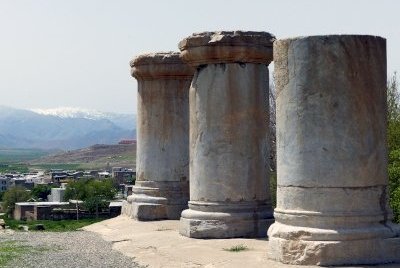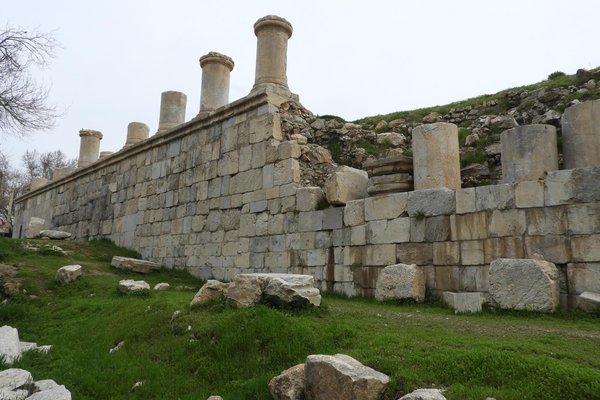Iran
Historic Monument of Kangavar
The Historic Monument of Kangavar comprises the Temple of Anahita, a Persian goddess.
The 220x212m building was built on a rock platform and has 2 stairways at the front and 1 at the back. It probably dates from the 2nd century AD.
Site Info
Official Information
- Full Name
- Historic Monument of Kangavar (ID: 5189)
- Country
- Iran
- Status
-
On tentative list 2007
Site history
History of Historic Monument of Kangavar
- 2021: Incomplete - not examined
- 2017: Incomplete - not examined
- 2007: Added to Tentative List
- Added to tentative list
- Type
- Cultural
- Criteria
Links
- UNESCO
- whc.unesco.org
All Links
UNESCO.org
- whc.unesco.org — whc.unesco.org
Community Information
- Community Category
- Archaeological site: Near Eastern
Travel Information
Recent Connections
News
No news.
Community Reviews
Show full reviews
If you visit the WHS of Bisotun then you are likely to pass Kangavar 60 kms earlier on the road from Tehran/Hamadan. The site is an open untidy, scrubby area to the west of the town - it will probably take less than 30 minutes for anyone not “into” Iranian archaeology! The problem isn’t seeing it, but getting much from the visit! Indeed, if it wasn’t for that T List “tick” (and with it the potential for an inscribed one in the future!) I suspect that most people would give it a miss. When we were there in April 2016 the site was fenced and an entry fee was payable. There was no museum, and, apart a very general one at the entrance, no interpretation boards. And no other visitors.
The current T List description can’t be accused of over-hype! I can even quote it in its entirety without extending this review by much – “A monument known as the Temple of Anahita built on a rock platform overlooking the plain of Kangavar. This is a huge building measuring 220m×212m. The monument has a two-sided stairway on its southern front and a one-sided stairway at its northeastern corner. Historical sources and archaeological evidence attribute this monument to the Achaemenid period until the Islamic period.” The word “huge” is perhaps the one to home in on. It is often claimed to be the “second largest stone building in Iran after Persepolis”. The dimensions of the platform …
Keep reading 0 comments
